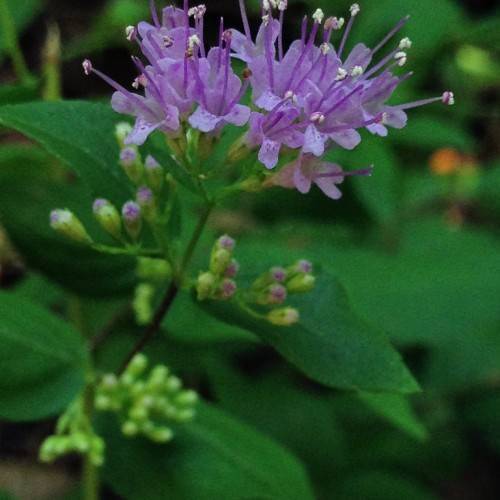
common dittany
Cunila origanoides
Cycle:
Herbaceous Perennial
Watering:
Minimum
Hardiness Zone:
5 - 8
Flowers:
Flowers
Sun:
Full sun,part shade
Leaf:
Yes
Growth Rate:
Low
Maintenance:
Low
Salt Tolerant:
Yes
Care Level:
Medium
watering
Common dittany should be watered once every week. When watering, make sure that the soil is moist, but not soggy. The amount of water to use can vary depending on the soil texture and your local climate. During dry, hot weather, more water may be needed. In cooler, wetter months, less water may be required. For optimal health, aim to keep the soil moist 2 to 3 inches below the surface. Aim to provide enough water so that the entire root system has been watered and the potting mix is saturated. That may mean pouring on a few more glasses of water than usual.
sunlight
Common dittany prefers full sun or near full sun and should be placed in a location that receives 6 to 8 hours of direct sunlight each day. It can also tolerate partial shade, but does best in full sun. It is also useful as a ground cover in areas that receive at least 4 to 6 hours of sunlight each day. During the spring and summer months, it is important to avoid placing Common Dittany in shaded areas as it can stunt its growth. During the winter months, some shade can be beneficial; however, too much shade can cause long-term damage.
pruning
Common dittany should be pruned during active growth periods in the early spring and late summer. Pruning is best done when the new growth is still in the early stages of development. To prune, use sharp, clean pruning shears or a knife. Cut back the plant by up to 1 third, removing dead, diseased, or weak branches. Also, remove any shoots growing away from the main stem or growing sideways. Pruning helps to maintain the natural shape of the plant and encourages new growth. If pruning for shape, try to keep the center slightly higher than the sides, as common dittany tends to sprawl. Pruning should be kept to a minimum to avoid over-pruning.
